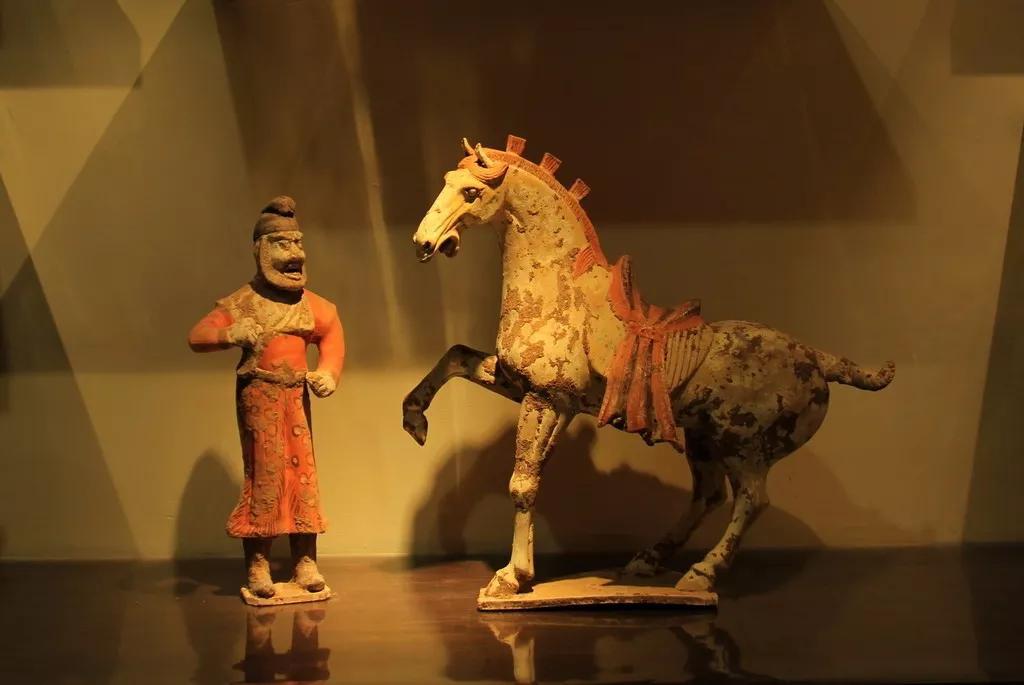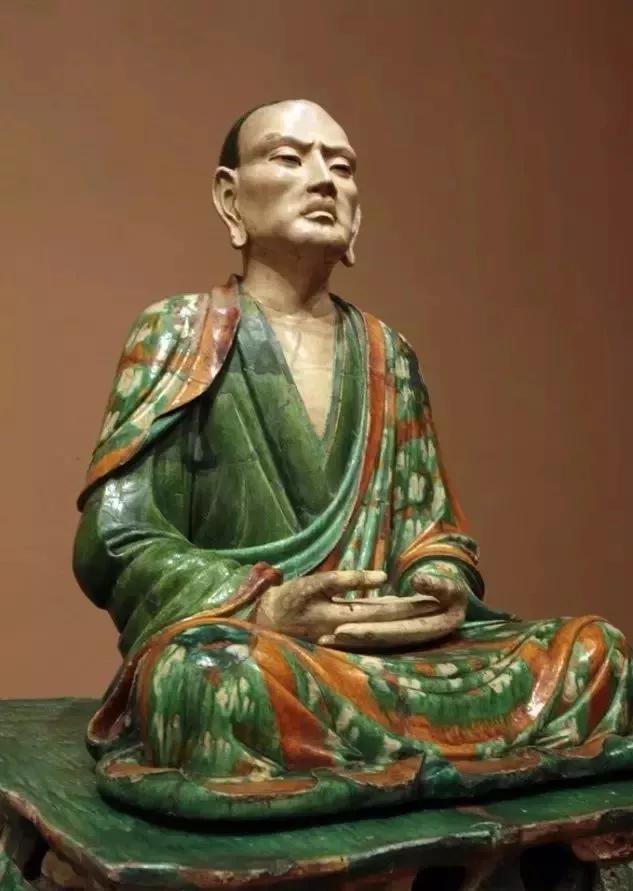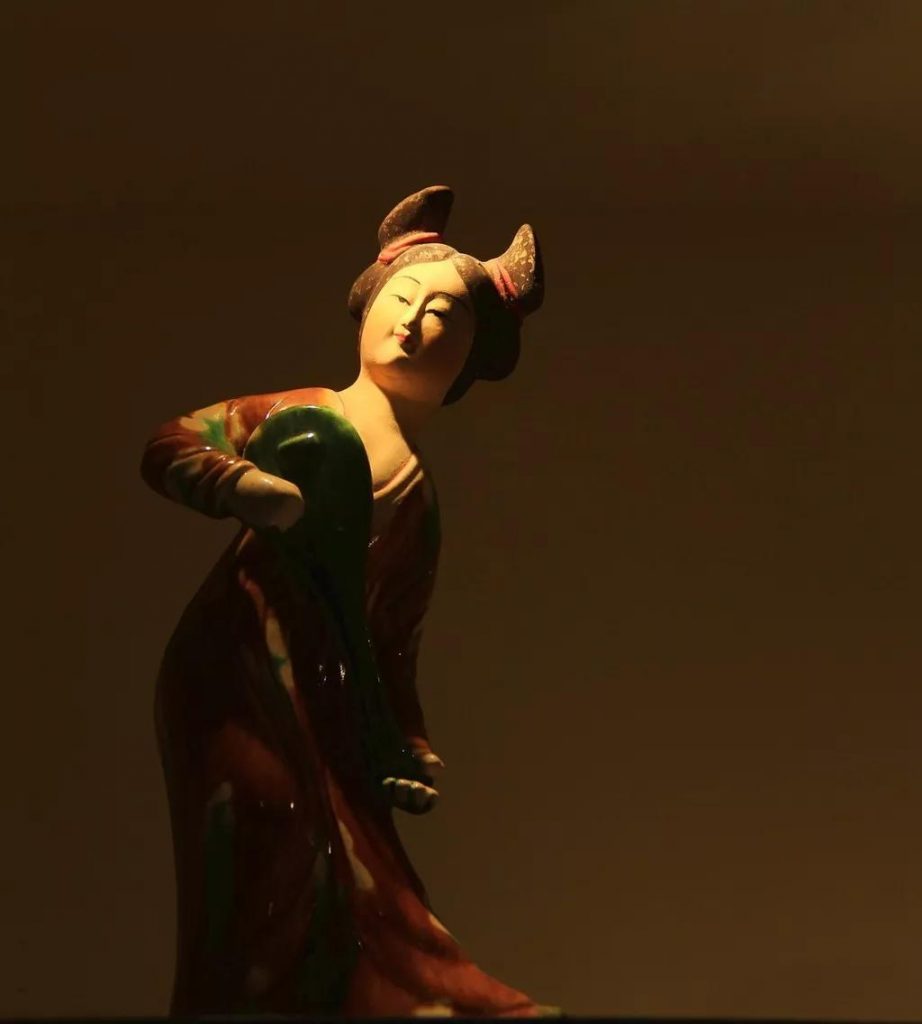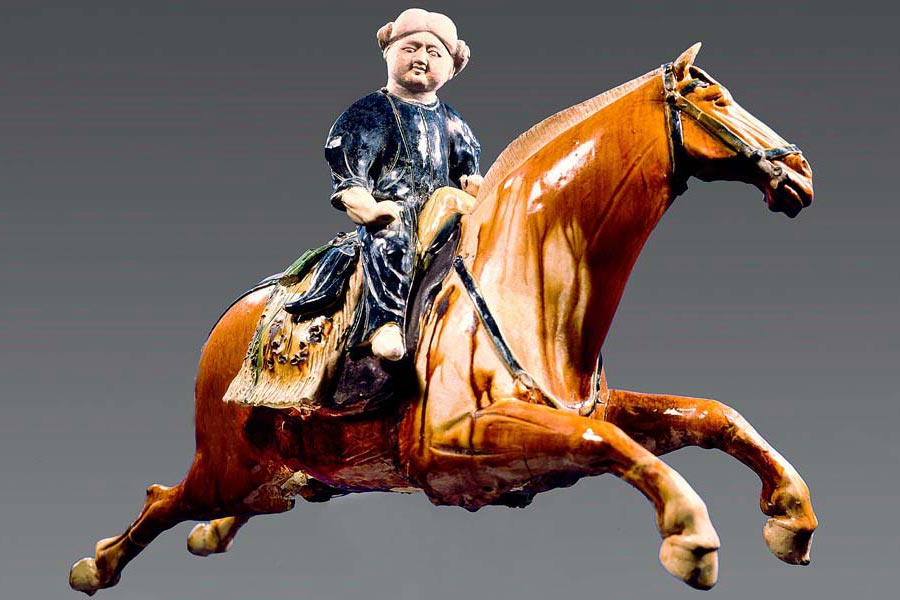As a unique kind of treasure in the Tang Dynasty, Tang Tri-Color Glazed Ceramics, also known as Tang Sancai are famous for their vivid shapes and colorful appearances. At the same time, Tang Tri-Color Glazed Ceramics plays a prominent role in the history of Chinese sculpture on account of its high economic value, artistic value, aesthetic value, and archaeological value. Therefore, it is called the “encyclopedia” of the Tang Dynasty. From the perspective of historical research, Tang Tri-Color Glazed Ceramics has had important impacts on studying customs, clothing, religion, culture, foreign exchanges, and so on. Tang Tri-Color Glazed Ceramics is an important part of the ceramic history of the Tang Dynasty. Although it has been popular for less than 100 years, it has fascinated many people so far. Tang Tri-Color Glazed Ceramics has become a great object for many scholars and ceramic enthusiasts to make research.
1. Are Tang Sancai potteries or porcelains?
In fact, so-called ceramic is a general term for pottery and porcelain. There are many differences between pottery and porcelain. First of all, their raw materials are different. The pottery is made of clay which has an iron content of less than 3% and on the contrary, the other is made of porcelain clay which has an iron content of more than 3%. secondly, the temperature of firing is different. The pottery can be made under 2012 degrees Fahrenheit, but the porcelain must be made at higher than 2192 degrees Fahrenheit. Hence, Tri-Color Glazed Ceramics are potteries.

2. Are there only three colors on Tang Sancai?
The word “tricolor” has both the meaning of “tricolor” and the meaning of “multicolor”. Why? Because at first, there was only a monochromatic glaze. With the development of technology, two-color glaze, multi-color glaze, etc. appeared. But the basic colors are mainly green, brown, and blue (or yellow, white, and green). It is the reason why there is the word “tricolor” in its name. Now it is just a general term.
3. When did Tang Sancai appear?
It was no occasion that Tang Tri-Color Glazed Ceramics appeared in the Tang Dynasty. During this period, the country is stable and the economy was unprecedentedly prosperous. The culture and arts were flourishing. A powerful country could develop quickly in all fields, so the ceramic industry made great achievements. Before the Tang Dynasty, there was only a single-color glaze on the pottery. But since then, a variety of glazes have appeared. Moreover, the Tang was an open dynasty in an inclusive manner. of cultural fusion and cultural collision. In addition to it, people’s aesthetics changed generally. Therefore, Tang Tri-Color Glazed Ceramics became colorful. Besides, at that time, a large number of funeral objects were required by mortuary customs, which objectively promoted the development and evolution of Tang Tri-Color Glazed Ceramics.
4. At that time, what was the role of Tang Sancai?
1) Funerary objects.
Judging from the current unearthed situation of Tang Tri-Color Glazed Ceramics across the country, the majority of Tang Tri-Color Glazed Ceramics were unearthed in the tombs of the Tang Dynasty.
China always had a buried tradition. Luxuriant burial was a special social phenomenon in China with a long history from the Slavery Society to the present times. The custom of the elaborate funeral was popular during the Tang Dynasty due to people’s belief in the existence of gods and ghosts and filial piety. Tang’s prevalence of this practice was not only a high-ranking official aristocracy, the people were so, and formed an atmosphere. At that time, luxurious burial ceremonies were carried out and noblemen even spent most of their annual income building their tombs. Because people believed that after their death, their souls would live in another world. If they made luxurious burial ceremonies, they would enjoy that world. Therefore, there were a large number of burial tombs in the tombs of some emperors and dignitaries, and they would like to enjoy their favorite things in the tomb with their souls. These kinds of things were called funerary objects.

In the Tang Dynasty, the tradition of luxuriant burial was very popular. Actually, there were official regulations on funerary items. But few people would obey these regulations. According to the survey, most people got out of line and enjoyed funerary objects which were more than the official regulations. At this point, most of the Tang Tri-Color Glazed Ceramics which we have found were funerary objects. And among these funerary objects, most of them were horses. The horse was an indispensable animal in ancient life, especially in military affairs. Therefore, the Tang people attached great importance to the horse. The tricolor horse was the most outstanding pottery in Tang Tri-Color Glazed Ceramics.
2) Religious supplies.
Through these historical objects unearthed in the pit, we could understand the fact that Tang Tri-Color Glazed Ceramics played a very important role in religious articles. The typical cases are the productions in Qingshan Temple, Lintong City, and Shaanxi Province. With the help of Tang Tri-Color Glazed Ceramics, we can know more about the specific situations and details of religious development.

3) Building materials.
In ancient times, people used Tang Tri-Color Glazed Ceramics as a kind of building material. For example, the glaze on the roof was made of Tang Tri-Color Glazed Ceramics. the glass was called the colored glaze. From the 4th century, low-temperature lead glaze ceramics, this kind of building materials were called glass.
It could be seen that Tang Tri-Color Glazed Ceramics were not only used as funerary objects. Tang Tri-Color Glazed Ceramics were used in large buildings of the royal family. This opened up a new world for the development of Tang Tri-Color Glazed Ceramics.
In the Tang Dynasty, with the development of technology and the improvement of the economy, the use of glazes also gradually increased. On the basis of single-color glazes, colorful glazes also appeared. However, judging from the present excavation, an important feature of the Tang Dynasty glaze was the combination of single-color ones and colorful ones, but the number of single-color glazes was far more than that of colorful glaze.
5. What are the main types of Tang Sancai?
1) Character statue
There were also many kinds of tricolor figurines and large-scale works, such as king statues, both civil and military officers, as well as tomb figurines or town tomb beasts with human heads. There were small and medium-sized figurines, such as male standing figurines, female standing figurines, riding male figurines, riding female figurines, etc. Some of these works were very tall with a height of 70 to 80 centimeters, and some could reach more than 100 centimeters.

2) Animal statue
Among various kinds of animal statues, horses and camels were the most conspicuous. Why were there so many horses and camels in Tang Tri-Color Glazed Ceramics? Actually, the fact was related to the history of social development at that time. These statues reflected the developed transportation industry for the time. In the era of the flourishing Tang dynasty, camels were the main tool for cultural exchange and commercial trade between the Tang Dynasty and neighboring countries in the Western Regions. Therefore, in this period, camels were common.
Besides, during the era of the flourishing Tang dynasty, the emperor carried out the policy of opening to the outside world, horses played a significant role in commercial trade as an indispensable means of transportation. Moreover, horses got high value in terms of fighting on the frontier, defending the territory, going on patrol, hunting, and obeying court etiquette. Therefore, the statues of horses were extremely prosperous among Tang Tri-Color Glazed Ceramics. In addition to camels and horses, Tang Tri-Color Glazed Ceramics had also other statues, such as pigs, sheep, rabbits, chickens, ducks, and so on.
3) Living utensils
As an indispensable aspect of people’s daily life, daily supplies reflected people’s daily life scene in the Tang Dynasty to some extent. The most common ones in Tang Tri-Color Glazed Ceramics were closely related to people’s daily life. Those utensils included various categories, such as eating utensils, office utensils, cosmetic utensils, and storage utensils.
However, it was well-known that during the prosperous era of the Tang Dynasty, the king implemented a policy of opening to the outside world so that cultural exchanges and commercial trades between China and foreign countries were extremely frequent. In order to make more and more styles of Tang Tri-Color Glazed Ceramics, sometimes the craftsman would take a page from Persian and Arab countries that were adjacent to China.
6. What are the artistic characteristics of Tang Sancai?
1) Richness of color:
Pottery craftsmen used white, yellow, and green as the main colors in the process of making Tang Tri-Color Glazed Ceramics. In order to enhance its ornamental value and collection value, craftsmen supplemented Tang Tri-Color Glazed Ceramics with blue and brown as the decoration and embellishment, which was powerful evidence of the spirit of craftsmen.
In the meanwhile, they continued to develop and innovate the creative skills of Tang Tri-Color Glazed Ceramics, so that Tang Tri-Color Glazed Ceramics became colorful after being burned at high heat. In addition to it, Tang Tri-Color Glazed Ceramics could be made with different styles of colors, such as repetitive colors, original colors, and mixed colors. Therefore, Tang Tri-Color Glazed Ceramics got a prominent diversity in colors.
2) Different forms:
The shapes of Tang Tri-Color Glazed Ceramics were varied. As a typical kind of burial object, Tang Tri-Color Glazed Ceramics were generally used as objects related to the owner’s daily activities. Therefore, Tang Tri-Color Glazed Ceramics involved all aspects of social life in the Tang Dynasty. Tang Tri-Color Glazed Ceramics paid attention to the overall shapes and details. During this period, when craftsmen created Tang Tri-Color Glazed Ceramics, they would like to select a variety of decorative materials and techniques. To some extent, these stunning masterpieces reflected the folk aesthetic concept in the prosperous Tang Dynasty.
3) Chinese-foreign combination:
During the Tang Dynasty, the CNP(Comprehensive National Power) grew significantly. The economy was prosperous. Society was stable. And the arts and culture were blooming with the absorption of foreign cultures. On account of its special social background, Tang Tri-Color Glazed Ceramics got a good environment for development and developed with certain conditions. From the perspective of aesthetics, they not only inherited the unique tradition of the previous generation but also absorbed other styles of neighboring countries. In a word, Tang Tri-Color Glazed Ceramics perfectly combined practicality and aesthetics so that they got both artistic charm and exotic style.
4) Popularity for a short time:
Tang Tri-Color Glazed Ceramics had a great vogue for a short time. They appeared and developed rapidly in the 7th century. But they declined gradually in the early 8th century. Although Tang Tri-Color Glazed Ceramics disappeared later, the development of its technology also led to many new varieties of pottery. As time went by, the new kind of pottery had practicality on the basis of Tang Tri-Color Glazed Ceramics. In different periods, Tang Tri-Color Glazed Ceramics combined with contemporary historical background and productivity so that there were more and more styles and characteristics. Tang Tri-Color Glazed Ceramics spread from China to Japan, West Asia, and other countries and they also spawned many different artworks.
Tang Tri-Color Glazed Ceramics are the main representative of the civilization of the Tang Dynasty. Although Tang Tri-Color Glazed Ceramics have been popular for a short time, they have had a profound impact on the development of Chinese culture and art. In the prosperous Tang Dynasty, with political unification, economic development, cultural diversification, and the fashion of luxuriant burial, Tang Tri-Color Glazed Ceramics achieved unprecedented development. Thanks to the research on its artistic characteristics, we know more about the specific situations and details of the Tang Dynasty. The research of Tang Tri-Color Glazed Ceramics will not be stopped forever. What’s more, all kinds of interesting imitations attracted consumers.
Contemporary artists know the artistic value of Tang Tri-Color Glazed Ceramics and make great efforts to restore its former grandeur, which means so much to human beings.

